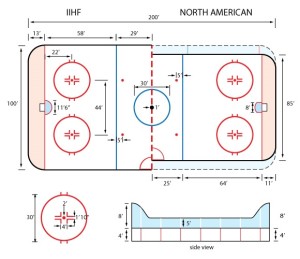The virus, MRSA, has been in the news again, however it has invaded a professional sports locker room this time. New York Giant’s tight end Daniel Fells recently contracted the virus, as it required nine surgeries to save his foot from being amputated. The infection will more than likely cost him his playing career. Growing up playing hockey, I was constantly in disgusting locker rooms and was also warned by my mother to also make sure my skin was covered when I touched surfaces. Obviously, anybody can contract MRSA, however the question came to me, are people who play contact sports more likely to have MRSA?
Firstly, let’s define what MRSA is. MRSA is a type of staph infection that is very hard to treat due to the fact that it is resistant to antibiotics. The infection begins as a painful skin boils and continues to get worse until treated. It is usually spread by skin to skin contact, so groups who are constantly in contact with others are more likely to contract the disease.
Are athletes who play contact sports more likely to contract MRSA? One would think, because sports like football, basketball, and wrestling involve a lot of skin to skin contact, which is how the disease is spread. Luckily, studies have been done to answer the question.
In one study done, it was determined that athletes who participate in contact sports are twice as likely to be carrying MRSA at any given time. The study followed 377 athletes from Vanderbilt who played sports such as football, soccer, basketball, lacrosse, baseball, cross-country and golf. Each month the researchers took swabs of the atheletes throat and nose to test for MRSA. Over a period of two years of college athletes were studied and it was found that between 8% to 31% of them who played a contact sport had been a carrier of MRSA at one point or another, compared to 0 to 23% of non-contact sport athletes (such as golf or baseball), and 0% to 5% of the general population. What was really interesting about the design of the study was the fact that college athletes were chosen to be the the test subjects of the study. College kids don’t exactly live the cleanliest of lives, as living in tight dorms and apartments would maybe make them more susceptible to contracting MRSA.
What are the best ways for colleges to keep these under control? It is recommended that you cover all open wound and follow standard procedure for taking care of cuts and sores. Also, you shouldn’t be sharing personal items in the locker room setting, such as towels and razors as that is another easy way for MRSA to become spread. Teams are taking extra precautions within their locker rooms to make sure they are properly cleaned in order to reduce the chance that MRSA may become spread inside the locker room.
After analyzing the study, I don’t think it is a fair assumption to say athletes are twice as more susceptible to carrying MRSA due to the fact they play contact sports. Only college athletes were studied, and I don’t think it is fair to make that generalization until pro athletes, high school athletes, and youth athletes are analyzed. Other factors such as living conditions, how educated one is about avoiding the disease, and the cleanliness of the environment can affect how likely someone is to be carrying MRSA. For all we know, Vanderbilt could be taking extra precautions in preventing MRSA in their locker rooms, and the percentage of data could be skewed.
In conclusions. according the the data, athletes who participate in contact sports are more likely to contract MRSA compared to athletes who participate in non-contact sports, or people who don’t participate in any type of sport at all. The study can not be generalized throughout the entire sports world due to the fact that only one group of athletes, college athletes, were studied.















